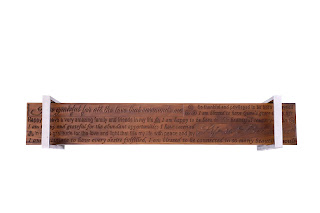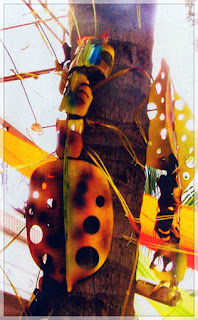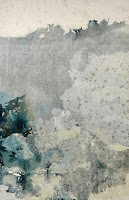Kochi-Muziris Biennale releases curatorial note and expanded list of participating artists
· The fourth edition of Kochi-Muziris Biennale will be held from December 12, 2018 to March 29, 2019
Kochi, Sept. 7: With less than 100 days to go for the opening of the fourth edition of the Kochi-Muziris Biennale, the Kochi Biennale Foundation has released the Curatorial Note and an expanded list of participating artists for the largest contemporary art event in South Asia.
Curated by eminent contemporary artist Anita Dube, who is known for her politically-charged works, Kochi-Muziris Biennale 2018 will focus on the theme of “Possibilities for a Non-Alienated Life”. The main exhibition, along with an ancillary programme of talks, seminars, workshops, film screenings, and music, will take place across multiple venues in Kochi, over a period of 108 days, beginning December 12, 2018.
“At the heart of my curatorial adventure lies a desire for liberation and comradeship (away from the master and slave model) where the possibilities for a non-alienated life could spill into a 'politics of friendship.' Where pleasure and pedagogy could sit together and share a drink, and where we could dance and sing and celebrate a dream together,” Dube said, in her curatorial note.
As an artist, Dube has consistently challenged cultural norms and championed critical engagement across media. Her vision for the upcoming Biennale carries forward, at its core, a spirit of ongoing and decentralised collaboration.
The expanded list of participating artists includes nearly 80 practitioners from Europe, Africa, Middle East, Asia and the Americas.
Curatorial Note by Anita Dube:
“I remember Guy Debord’s warnings of a world mediated primarily through images—a society of the spectacle—as I write this note. That such a society is fascism’s main ally, we are all discovering in different parts of the world today.
Virtual hyper-connectivity has paradoxically alienated us from the warm solidarities of community—that place of embrace where we can enjoy our intelligence and beauty with others, where we can love—a place where we don’t need the 'other' as an enemy to feel connected.
At the heart of my curatorial adventure lies a desire for liberation and comradeship (away from the master and slave model) where the possibilities for a non-alienated life could spill into a 'politics of friendship.' Where pleasure and pedagogy could sit together and share a drink, and where we could dance and sing and celebrate a dream together.
In this dream, those pushed to the margins of dominant narratives will speak: not as victims, but as futurisms’ cunning and sentient sentinels.
And before speaking, they will listen, like K P Krishnakumar’s Boy Listening—to the stone and the flowers; to older women and wise men; to the queer community; to critical voices in the mainstream; to the whispers and warnings of nature—before it is too late.
If we desire a better life on this earth—our unique and beautiful planet—we must in all humility start to reject an existence in the service of capital. Through the potential of social action, coming together, we ask and search for questions, critical questions, in the hope of dialogue.”
 |
| K P Krishnakumar, Boy Listening, 1985. Painted cloth, fiberglass, plaster. |
Expanded list of Participating Artists
Aernout Mik (Netherlands), Akram Zaatari (Lebanon), Arunkumar HG (India), Anju Dodiya (India), Annu Palakunnathu Matthew (India/US), Anoli Perera (Sri Lanka), Araya Rasdjarmrearnsook (Thailand), BV Suresh (India), Bapi Das (India), Barthélémy Toguo (Cameroon/France), Bracha Ettinger (Israel/France), Brook Andrew (Australia), Chandan Gomes (India), Chitra Ganesh (USA/India), Chittaprosad (India), Dennis Muraguri (Kenya), Domenec (Spain), EB Itso (Denmark), Goshka Macuga (Poland/UK), Guerrilla Girls (USA), Hassan Khan (Egypt), Heri Dono (Indonesia), Ines Doujak + John Barker (Austria + UK), Jitish Kallat (India), Julie Gough (Australia), Jun Nguyen-Hatsushiba (Japan/Vietnam), Juul Kraijer (Netherlands), KP Krishnakumar (India), Kausik Mukhopadhyay (India), Madhvi Parekh (India), Marlene Dumas (Netherlands), Martha Rosler (USA), Marzia Farhana (Bangladesh), Mrinalini Mukherjee (India), Mochu (India), Monica Mayer (Mexico), Nathan Coley (UK), Nilima Sheikh (India), Otolith Group (UK), PR Satheesh (India), Pangrok Sulap (Malaysia), Prabhakar Pachpute (India), Priya Ravish Mehra (India), Probir Gupta (India), Radenko Milak (Bosnia and Herzegovina), Rana Hamadeh (Netherlands/Lebanon), Rehana Zaman (Pakistan), Rina Banerjee (US/India), Rula Halawani (Palestine), Santu Mofokeng (South Africa), Shambhavi Singh (India), Shilpa Gupta (India), Shirin Neshat (Iran/USA), Shubigi Rao (Singapore), Song Dong (China), Sonia Khurana (India), Subhash Singh Vyam + Durgabai Vyam (India), Sue Williamson (South Africa), Sunil Gupta + Charan Singh (India/UK), Sunil Janah (India), Tabita Rezaire (France/French Guyana/South Africa), Tania Bruguera (Cuba), Tania Candani (Mexico), Tejal Shah (India), Temsuyanger Longkumer (India/UK), Thomas Hirschhorn (Switzerland/France), VALIE EXPORT (Austria), Veda Thozhur Kolleri (India), Vicky Roy (India), Vinu VV (India), Vipin Dhanurdharan (India), Vivian Caccuri (Brazil), Walid Raad (Lebanon/USA), William Kentridge (South Africa), Young-Hae Chang Heavy Industries (South Korea), Zanele Muholi (South Africa)
(Press Release)
Please share this article using the social media widgets at the bottom and do subscribe to receive regular updates from Art Scene India.
Also read,
Art News: Grazie Infinite by Shraddha Rathi in Bangalore
Art Mumbai: Written on Water curated by Sanjeev Sonpimpare
Reasons To Visit The 2017 Venice Biennale by Shraddha Rathi
Art and the Question of Authorship and Ownership in the Internet Era by Narendra Raghunath
The 'Reality' of Photo Art Today by Shibu Arakkal
A Tribute to Artist M.B. Patil by H.A. Anil Kumar
Art News: apexart Open Call for Group Exhibitions 2018-19
5 Reasons a Good Catalogue Text is Essential for Your Art
How To Write An Artist Statement
6 Tips On How To Approach An Art Gallery And Find Gallery Representation
Exhibiting Art in Non-Gallery Spaces
Guide To Exhibiting Your Artworks
How to Create an Online Presence












